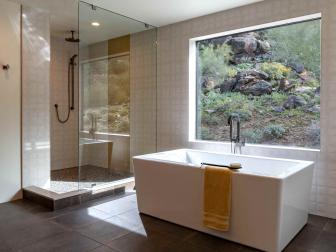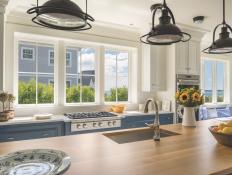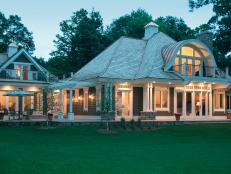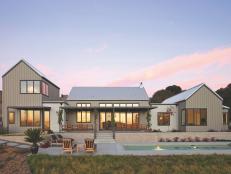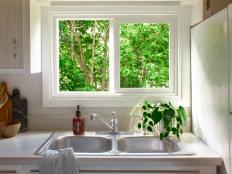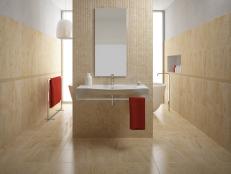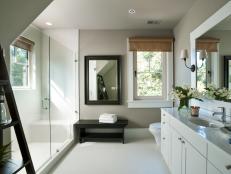Choosing the Right Windows
Check out our guide to frames, glass, design and installation before you buy.

Marvin Windows and Doors
Gone are the days when homeowners' interest in windows was limited to whether they could find appropriate coverings for the glass. Today's energy-conscious consumers want to minimize the costs of heating and cooling their homes. Whether you’re building a new home or planning to replace existing windows, the key is to know which choices will give you the biggest bang for your buck without delivering a blow to your bottom line.
If you're considering replacement windows, do the math to find out just how cost-effective new units would be. One way is by completing a home energy audit. Whether you hire a professional or try the DIY route, this energy efficiency checkup for your home will give you a sense of where the major energy-loss areas are and how serious they are.
11 Types of Windows 23 Photos
From bay windows to casements, learn about your options before purchasing.
It's essential to get a good read on where the thermal transmission problems are in your home before you embark on a full replacement-window renovation. You don't want to lay out five figures for a whole-house window makeover when your real problems might have been solved by a tube of caulk, some weatherstripping or a few storm windows.
Replacement windows aren't the right choice for every home. Bruce Irving, a Cambridge, Mass.-based home-renovation consultant and a former producer of the long-running renovation show This Old House, gets especially passionate about people replacing historical wood windows.
Irving says that especially in older homes, original windows are an integral part of a house's character, and homeowners who believe they need to upgrade these windows' energy efficiency should first try to add rather than subtract. "With a good storm window over it, original wood windows can equal the energy performance of a modern window."
Situations that may warrant window replacement, though, include the following:
• Your windows have single-pane glass or temperature-conductive frames and sashes. Most window and construction experts agree that homes with cheap, poorly-performing windows can almost always benefit from window replacement.
• Your windows are in poor condition. Beyond efficiency concerns, windows in poor condition can contribute to water leaks, humidity problems in the home and even pest infestations. Cracked windowpanes, non-operational windows and rotting frames, sashes or sills on wood windows are all good reasons to consider replacement.
• Your windows pose safety problems. Windows that don't open or shut completely or that are weak or loose because of improper maintenance or damage are good candidates for replacement. And if your home has upper-floor rooms with windows that don't open, consider replacing them with operable windows and placing an easy-to-use fire ladder in the room so the windows can serve as exits in case of emergency.
If you decide to replace your windows, there are four factors to consider when choosing energy efficient models: frame, glass, design and installation.
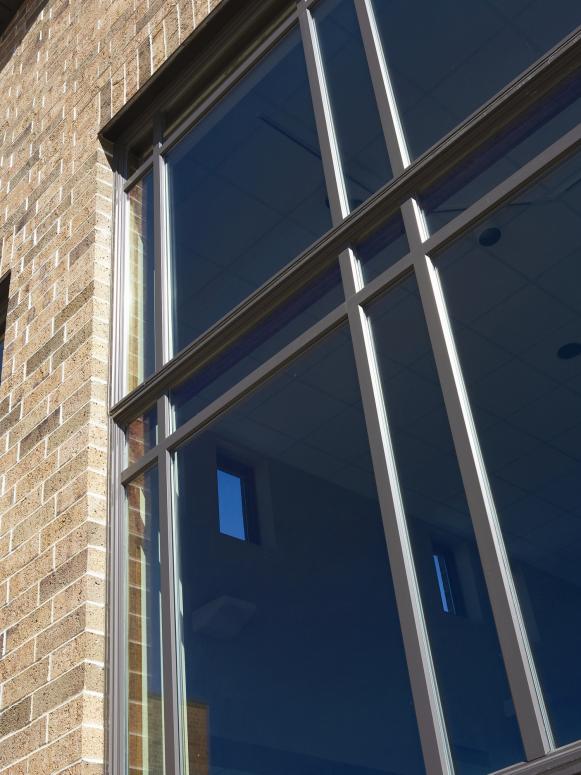
The Frame
Most people know a wood frame is less prone to heat and cold transfer than an aluminum one, since metals conduct temperature much more easily than wood. But that doesn't mean wood is always the best choice for a utility-bill-friendly window. A variety of materials are available for window frames, and each has positive and negative aspects. Here's a look:
• Vinyl: Just because vinyl is a less expensive material doesn't mean it has to be "cheap." A well-constructed, properly installed vinyl window can be a practical choice budgetwise while still offering excellent energy efficiency measures through insulated glass and tight construction that reduces air leakage. Vinyl windows can be limited in color choices, however, and the fact remains that some people simply don't like the look of vinyl on their home.
• Wood: Wood windows offer the best insulative value, though they also require more upkeep than vinyl, wood-clad or aluminum frames. Because of the potential for rot, they may not be the best choice for extremely humid or rainy climates. A well-built wood window will stand the test of time, however; many original wood windows in older homes are still in good shape thanks to the high-quality cut and species of wood used.
• Aluminum: While not the top-performing material in terms of heat transfer and loss, aluminum windows are practical in rainy, humid climates, and they meet stringent coastal building codes in hurricane-prone areas thanks to their strength.
• Wood-clad: Wood-clad windows seemingly offer the best of both worlds: a low-maintenance exterior (usually vinyl or aluminum) and a temperature-transfer-resistant wood interior. But clad windows can be prone to water intrusion, which can cause rotting, especially in the sills and jambs, where water tends to pool. Proper installation of wood-clad windows should include use of waterproof rubber membranes around the cladding as well as a stand-alone flashing assembly called a sill pan. The sill pan drains any water that gathers around the sills and jambs, minimizing moisture intrusion (and resulting wood deterioration).
• Composite: These windows, made from scrap wood shavings and plastic resins, can effectively mimic the look of wood but are virtually maintenance-free. And because the resins used in the window-manufacturing process are often from recycled plastics, they're an eco-friendly choice.
• Fiberglass: These are technically composite windows, since they're made of a mixture of glass fibers and polyester resins, but they're often discussed independently of other composite windows because that term is increasingly being used solely to describe the wood-pulp-and-plastic composite material. Fiberglass windows are more expensive than other similarly equipped window units, but their selling points are many: They’re extremely energy efficient thanks to their low thermal conductivity; they’re the strongest and most durable windows on the market; unlike vinyl windows, they can be repainted several times; and they don't twist or warp like vinyl or wood frames can.
The Glass
While the material each window is constructed from is important, the reality is that most recent window-related buzzwords are all about what's inside the frame. But what do all these upgrades mean?
John Lala, president of Rycorp Construction in Virginia Beach, Va., is familiar with the gamut of efficient window options. He's built houses in all price ranges, from bare-bones-basic structures to million-dollar-plus projects for very eco-conscious clients. And after seeing everything out there and talking to lots of home buyers, he says, he ends up using windows with the same basic energy efficiency features in most of his projects.
"A double-pane window with low-E glass with a vacuum-sealed argon fill — that's what people ask for," he says. "It's an extra $40 or so per window for me to add these features, and they really do make a difference in a home's utility bills." Lala says he's found that doing anything more, such as using triple-pane glass or denser gases with greater insulative properties, "just adds cost and gives diminishing returns in efficiency."
So what exactly are you getting when you choose a window with the aforementioned options? "Low-E, argon-filled, double-paned windows provide significantly more insulation than a single-pane window," says Kendra Weinisch, a residential energy efficiency consultant in San Jose, Calif. "These windows protect the inside of the house from the sun's heat and UV rays in the summer, and they prevent heat from escaping during winter. From the standpoint of energy efficiency and value, these types of windows make a lot of sense."
Weinisch adds that while triple-pane windows may be notably more efficient in especially harsh winter climates, they can also reduce the window's visibility and light transmittance.
You shouldn't have to look much further than a window's glass to find out what the unit's efficiency features are. All windows in the voluntary Energy Star program will have stickers on them displaying ratings by the National Fenestration Rating Council (NFRC). To qualify for Energy Star status, window manufacturers must meet standards for these two main metrics:
• U-value, which measures a window unit's resistance to heat loss
• Solar heat gain coefficient (SHGC), which measures how much heat enters a home through the glass
For both U-value and SHGC, the lower the number, the better the window will perform.
Another option for providing UV protection is UV-repellent film that manufacturers use to tint windows. It’s undetectable to the eye, and they preserve paint and textiles in addition to keeping a house cooler. Homeowners in the South, the Southwest and other hot regions can reap energy-saving rewards even with a small degree of tinting.
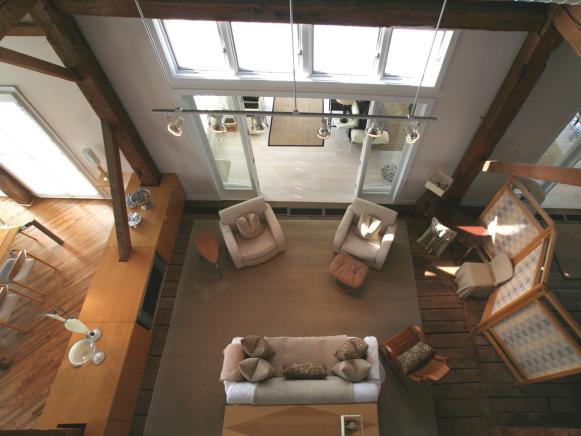
The Design
Transoms are the "eyebrow art" of a window. Rather than providing fixed transoms that exist for aesthetics only, some manufacturers are rolling out "active" transoms that open, providing an inlet for fresh air.
What's more, the look of these working windows is more appealing because they require deeper casing, Franklin says. "Active transoms have more depth, so they don't look like a flat piece of glass stuck on the wall with a bit of casing," he explains.
Homeowners seeking environmental benefits from a window design should move away from configurations like radius-style windows shaped like half-moons, "sunbursts" or circles, which do not open.
The Installation
Even the most expensive window unit won't perform effectively if it's not installed correctly. Be wary of any contractor who relies too heavily on expanding foams or sealants to get a window to fit well — these materials aren't waterproof and can lead to problems down the road. Pre-installation waterproofing, often completed long before windows are installed, is the best option, says Jim DeLaPlaine, director of operations for Building Engineering-Consultants of The Woodlands, Texas.
Flashing and proper caulking may be the cheapest parts of window installation, but if they're not done with an eye to detail, the ensuing water leaks will cause a barrage of problems for both builder and buyer that could have been easily prevented.
Some window designs are inherently more efficient than others. The most common types are:
• Double-hung windows. These are traditional units in many homes across the country, and they're especially common in prewar buildings. With double-hung windows, the bottom slides up to open the unit. They can be efficient choices, but in extreme climates, they may not be the best option, because of the potential for air intrusion between the sliders.
• Casement windows. Popular in climates where wind is an issue, these units, which have a crank that swings the window outward to open, actually seal themselves off tighter when wind blows toward the house. They require maintenance on hinges and seals, however, to ensure their continued stability and efficiency.
• Picture windows. These usually don't open, and they come in many shapes and sizes, but that doesn't mean they can't be efficient — glass choice and gas-filled interiors are especially important with these larger units.
Other designs include windows with transoms that open, providing an inlet for fresh air. And they look appealing because of the deeper casings they require. Avoid configurations like radius-style windows shaped like half-moons, sunbursts or circles that don't open.






